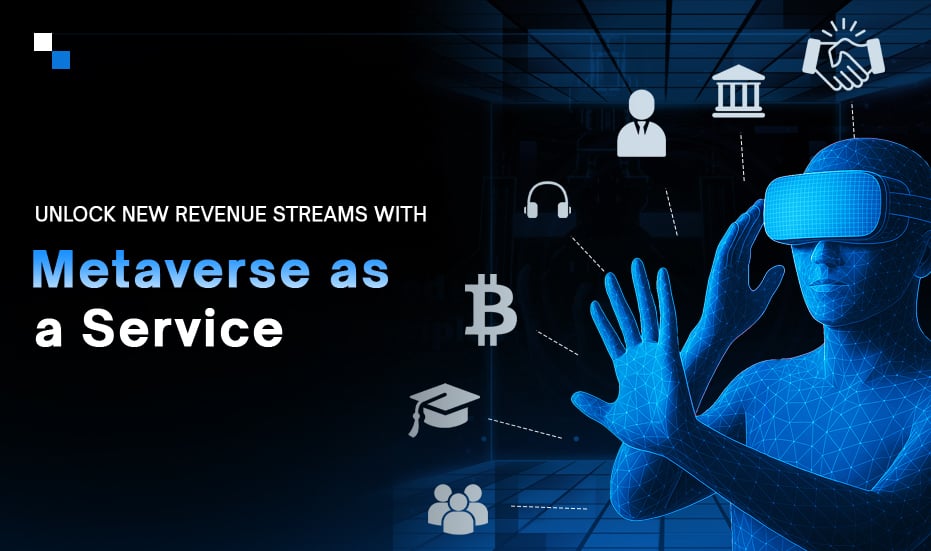
MEV And SUAVE: A Deep Dive
November 24, 2023
Top 10 Businesses That Can Benefit from White Label Neobanking Platform
November 28, 2023The world of sports has always been driven by innovation and advancements. From introducing new technologies to enhance player performance to using data analytics to analyze game strategies, the sports industry has never shied away from embracing change. Now, with the rise of the metaverse, a new revolution is set to reshape the way we experience sports.
To truly understand the impact of the metaverse in sports industry, it’s important to look at the statistics that highlight its growing popularity and potential. According to an estimation, the global metaverse market is expected to reach a value of USD 936.6 billion by 2030. This staggering figure reflects the widespread adoption of metaverse technologies across various industries, including sports.
Metaverse Development: Essential Tips to Consider
Are you a sports enthusiast looking to explore the exciting possibilities of the metaverse? The metaverse, a virtual reality space where people can interact with a computer-generated environment and other users, is revolutionizing industries across the board. The sports industry is no exception, with the metaverse offering unique opportunities for immersive experiences, fan engagement, and monetization. It provides a seamless integration of the physical and digital worlds, allowing users to experience sports events, meet athletes, and participate in interactive games, among other things.
Let’s now talk about the essential tips to consider for metaverse in sports industry, ensuring that you stay ahead of the game.
- Understand your Audience: Before embarking on metaverse development, it is crucial to understand your target audience. Analyze their preferences, behaviors, and expectations to create personalized and engaging experiences. Are your fans more interested in game simulations, behind-the-scenes content, or interactive challenges? Tailor your metaverse experience to cater to their specific desires.
- Build Realistic Environments: To provide an authentic experience, invest in creating realistic virtual environments that resemble iconic sports arenas and stadiums. Attention to detail, such as recreating crowd dynamics, player movements, and realistic audio, will enhance the immersive experience and transport fans directly into the heart of the game.
- Focus on Intuitive User Interfaces: User interfaces (UI) play a critical role in ensuring a smooth and intuitive metaverse experience. Avoid cluttered interfaces and prioritize simplicity and ease of navigation. Incorporate interactive elements such as gesture recognition, voice commands, and haptic feedback to enhance user engagement and create a truly immersive experience.
- Enable Social Interactions: One of the key attractions of the metaverse is the ability to connect with other users in real-time. Facilitate social interactions by integrating chat features, live streaming capabilities, and interactive multiplayer games. By fostering a sense of community, fans can share their excitement, strategize, and engage in friendly competition.
- Monetize through Virtual Goods and Experiences: The metaverse in sports industry offers unique revenue opportunities through the sale of virtual goods and experiences. Consider offering exclusive digital merchandise, limited edition player skins, or virtual meet-and-greets with athletes. By incorporating a robust virtual economy, you can generate additional revenue streams and enhance fan loyalty.
How Will the Metaverse Bring a Change in the Sports Industry?
Here’s how metaverse development will bring a transformative change to the sports landscape:
- Enhanced fan engagement: The metaverse will revolutionize the way fans experience sports. Instead of simply watching matches on television or attending physical events, fans can now immerse themselves in a virtual stadium, interact with other fans, and even engage with their favorite athletes. This will create a more immersive and interactive fan experience, blurring the lines between the physical and virtual worlds.
- Expanded revenue streams: The metaverse opens up new avenues for revenue generation in the sports industry. Virtual tickets, merchandise, and sponsorship opportunities within the metaverse can provide additional income for sports teams and organizations. Imagine attending a virtual sports event and having the ability to purchase virtual merchandise to show your support for your favorite team.
- Training and performance optimization: Athletes can leverage the metaverse in sports industry to enhance their training and performance. Virtual reality (VR) and augmented reality (AR) technologies within the metaverse can simulate game scenarios, allowing athletes to practice and improve their skills in a safe and controlled environment. This can lead to better performance on the field and a reduction in injuries.
- Global accessibility: The metaverse will eliminate geographical barriers, making sports accessible to individuals around the world. Fans from different continents can come together in the virtual space to support their favorite teams and players. This opens up new opportunities for sports organizations to reach a global audience and expand their fan base.
The Future of Sports in the Metaverse
With the metaverse development popularity on the horizon, the sports industry needs to adapt and embrace this new digital frontier. Here are some potential scenarios of how the future of sports could look like in the metaverse:
- Virtual stadiums and arenas: Instead of physical venues, sports events could take place in virtual stadiums and arenas within the metaverse. Fans can attend matches, sit in virtual seats, and cheer for their teams alongside other fans from around the world. This would provide a unique and engaging experience that surpasses the limitations of physical stadiums.
- Customizable sports experiences: In the metaverse, fans could have the ability to personalize their sports experiences. They can choose their preferred camera angles, access real-time stats, and even interact with virtual versions of their favorite athletes. This level of customization would enhance the fan experience and create a deeper connection between fans and their favorite sports.
- Virtual sports leagues: The metaverse could give rise to virtual sports leagues where gamers can compete against each other using digital avatars. These leagues could be sponsored by real-world sports organizations and provide an additional avenue for fan engagement and revenue generation.
Real-World Examples of the Metaverse in Sports
Several organizations are already embracing the metaverse in sports industry and reaping its benefits. Here are some real-world examples:
- NBA Top Shot: NBA Top Shot is an officially licensed digital collectibles platform that allows fans to own and trade virtual basketball moments. These moments are represented as non-fungible tokens (NFTs), providing a unique and valuable digital ownership experience.
- Formula 1 Virtual Grand Prix: Formula 1 embraced the metaverse during the COVID-19 pandemic by hosting virtual races using the official F1 video game. This allowed fans to experience the thrill of racing virtually and provided a platform for real-world drivers to compete in the absence of physical races.
Conclusion
The metaverse is transforming the sports industry at an unprecedented pace. With its ability to enhance fan engagement, create global accessibility, and unlock new monetization opportunities, the metaverse is set to revolutionize the way we experience and interact with sports. By embracing virtual reality and augmented reality, and fostering community engagement, sports organizations can stay ahead of the curve and provide fans with unforgettable experiences that bridge the gap between the real and virtual worlds.
Get ready for metaverse development with the assistance of Antier, because the metaverse in sports industry is gaining immense popularity these days, and it’s here to change the game.



